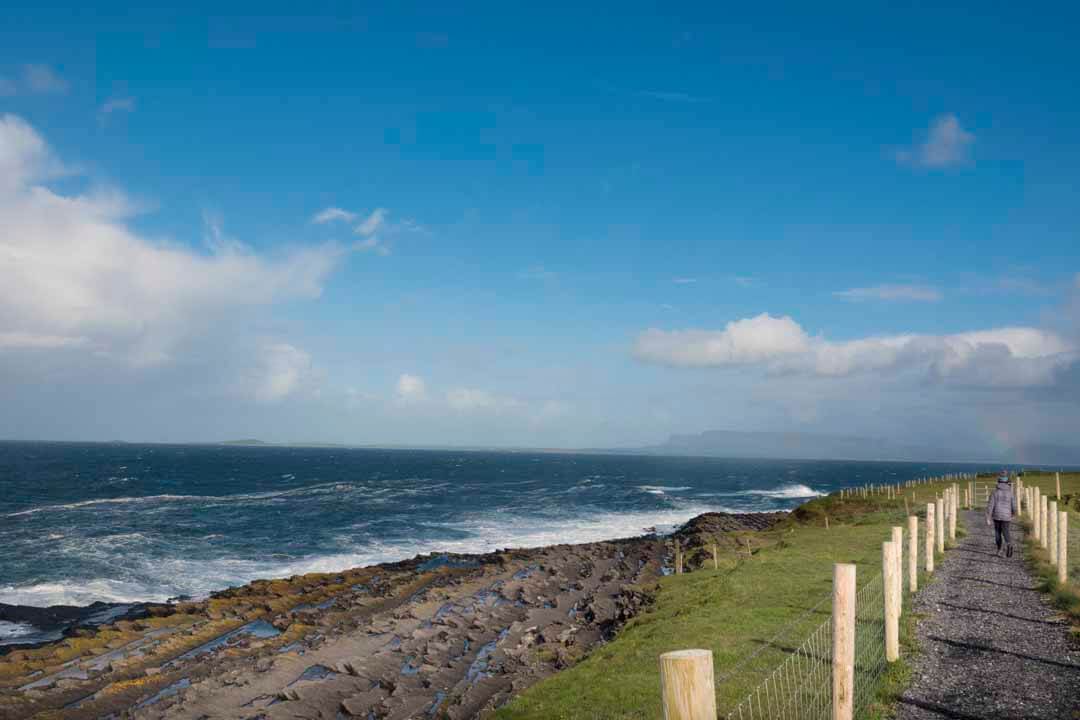
Welcome to Aughris Coastal Walk in Sligo, this is a short walk, but visit Aughris Head nearby and perhaps the Beach Bar for coffee. If you have the energy avail of the surf school or just enjoy the relaxing view, because this place is not out of place on a chocolate box. The trail is packed with information supplied by sligowalks.ie
Welcome to Aughris Coastal Walk in Sligo, this is a short walk, but visit Aughris Head nearby and perhaps the Beach Bar for coffee. If you have the energy avail of the surf school or just enjoy the relaxing view, because this place is not out of place on a chocolate box. The trail is packed with information supplied by sligowalks.ie
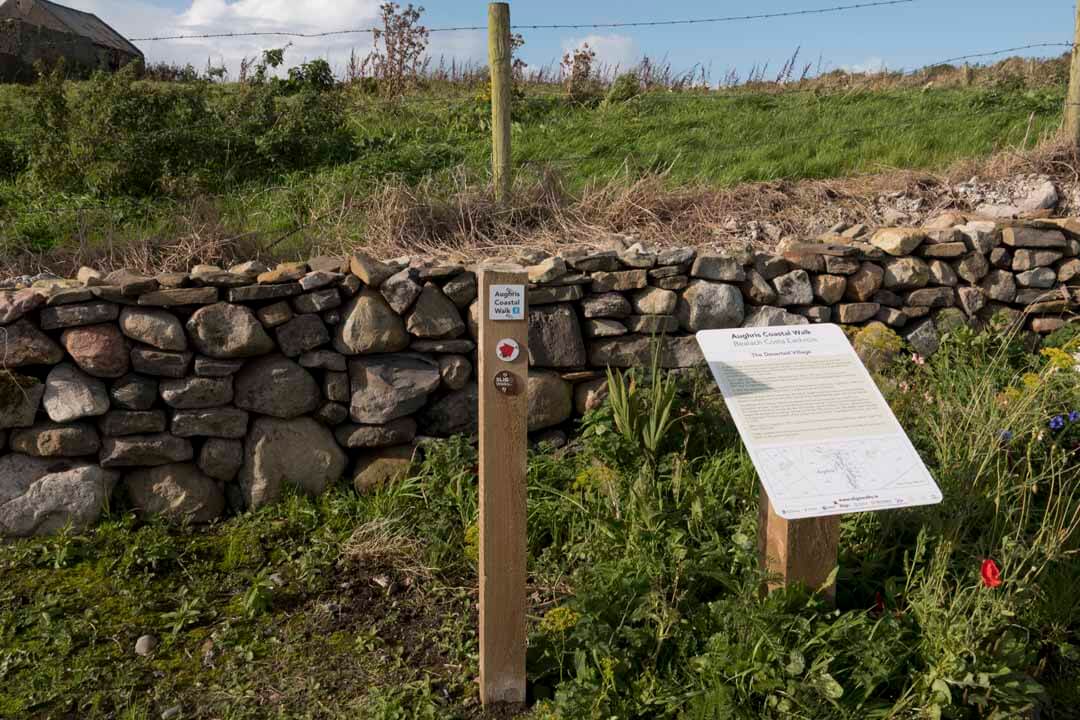
Text from above
The Trail
The Trail
Welcome to the Aughris Coastal Walk, a place for breathtaking views and fresh sea air! You may have driven here today, if so, park your car considerately near the Beach Bar before arriving at this point. To the left of Aughris Pier you will see a gravel path – take this route to begin one of the most spectacular cliffside walks located on the Wild Atlantic Way.
Welcome to the Aughris Coastal Walk, a place for breathtaking views and fresh sea air! You may have driven here today, if so, park your car considerately near the Beach Bar before arriving at this point. To the left of Aughris Pier you will see a gravel path – take this route to begin one of the most spectacular cliffside walks located on the Wild Atlantic Way.
The trail is a mixture of grass and gravel paths, which, for the most part, is fenced on both sides, along with minor country roads. Note that there are sections where the path runs along an unfenced coastal grass section, and extra care should be taken here. Allow between 45 mins – 1 hour for the completion of the walk. The walk is fairly flat with just some gentle inclines. After 2.5km the path turns away from the coast towards a look out post and deserted village where it meets a minor road. Follow this until you reach a T-junction, turn left, go straight through the next cross roads in the direction of the Beach Bar to complete the walk.
The trail is a mixture of grass and gravel paths, which, for the most part, is fenced on both sides, along with minor country roads. Note that there are sections where the path runs along an unfenced coastal grass section, and extra care should be taken here. Allow between 45 mins – 1 hour for the completion of the walk. The walk is fairly flat with just some gentle inclines. After 2.5km the path turns away from the coast towards a look out post and deserted village where it meets a minor road. Follow this until you reach a T-junction, turn left, go straight through the next cross roads in the direction of the Beach Bar to complete the walk.
We started at the Lookout Post, making our way to the harbour
We started at the Lookout Post, making our way to the harbour
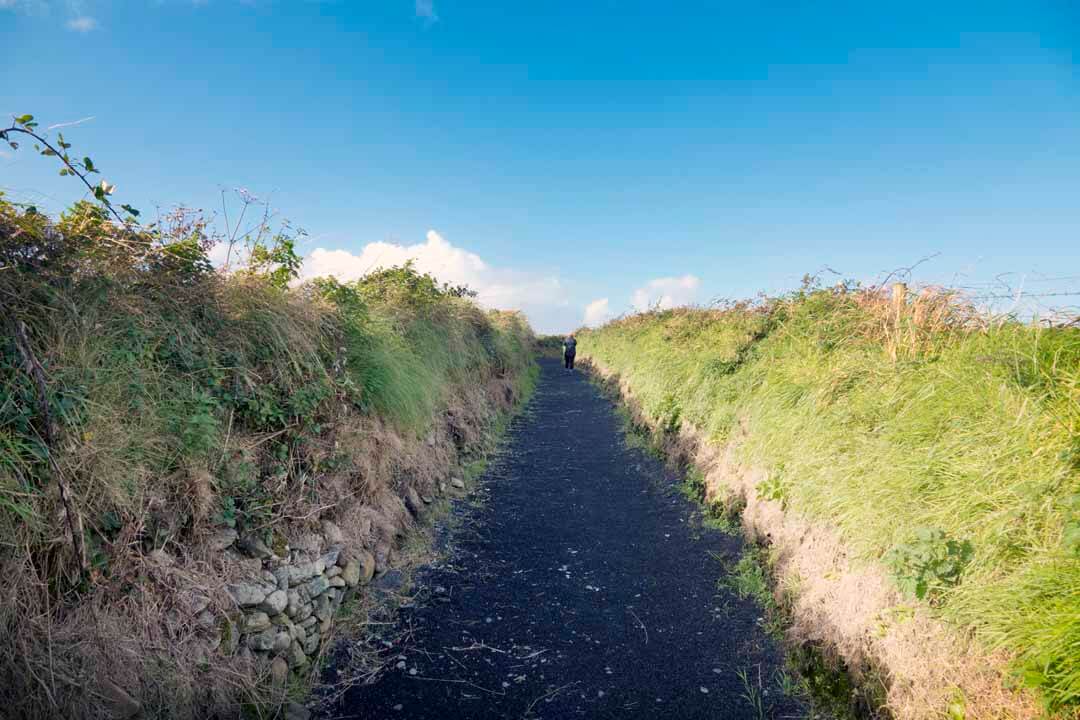
Aughris Coastal Walk
Aughris Coastal Walk
Look Out Post No. 67
Look Out Post No. 67
This small, square concrete hut played a significant role during World War II. or the Emergency as it was referred to in this country. Though Ireland remained neutral throughout the conflict of 1939.-45, the war impacted on people in many different ways, particularly through the rationing of food, fuel and clothing.
This small, square concrete hut played a significant role during World War II. or the Emergency as it was referred to in this country. Though Ireland remained neutral throughout the conflict of 1939.-45, the war impacted on people in many different ways, particularly through the rationing of food, fuel and clothing.
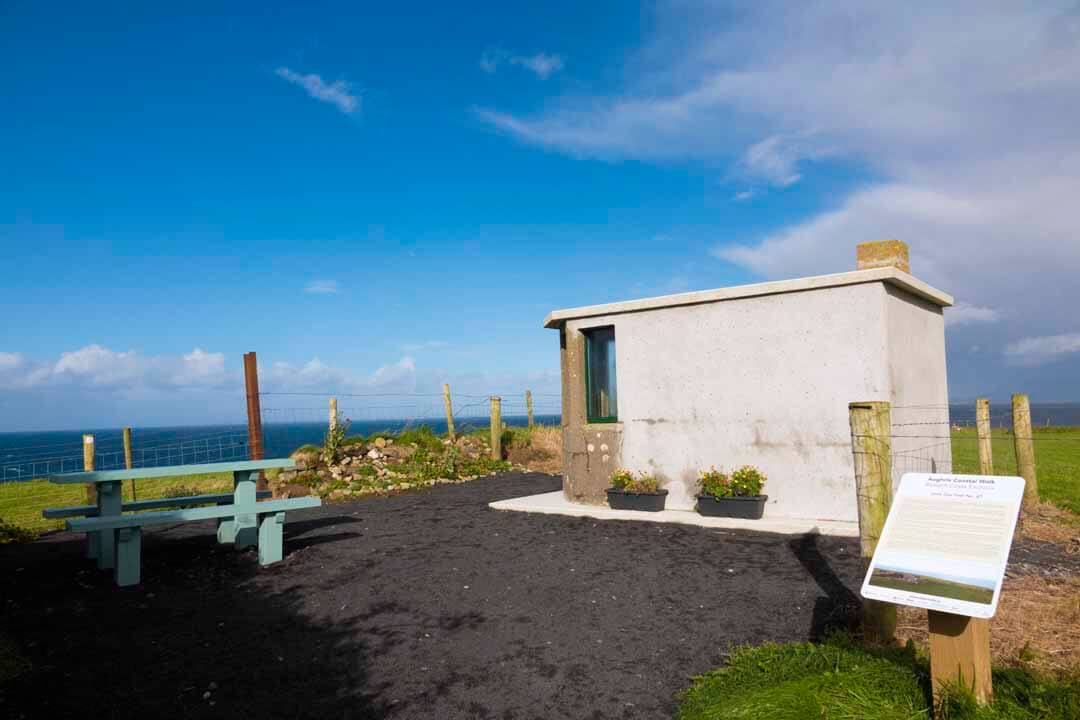
From above
From above
But the areas around Aughris also witnessed the war at first hand, from the body of a German soldier being washed ashore through to the sighting of Allied aircraft. Despite the Irish Free State’s neutrality the country was on a defensive military footing for the duration of the war, and this led to construction of 83 LOPs (Look Out Posts) which were constructed on headlands around the entire Irish coastline.
But the areas around Aughris also witnessed the war at first hand, from the body of a German soldier being washed ashore through to the sighting of Allied aircraft. Despite the Irish Free State’s neutrality the country was on a defensive military footing for the duration of the war, and this led to construction of 83 LOPs (Look Out Posts) which were constructed on headlands around the entire Irish coastline.
This LOP was manned by 7 men, mainly local volunteers, who watched over the seas to warn of attack or to report any military sightings to the authorities. Sligo LOPs had been built by the Winter of 1939.40 and were made from pre-cast blocks which were delivered to the site. As temporary buildings, these structures were prone to let in wind and rain, and during stormy weather the walls and windows could leak badly. The tiny fireplace inside was said to have been of little use for burning turf, and in many instances the chimneys smoked.
This LOP was manned by 7 men, mainly local volunteers, who watched over the seas to warn of attack or to report any military sightings to the authorities. Sligo LOPs had been built by the Winter of 1939.40 and were made from pre-cast blocks which were delivered to the site. As temporary buildings, these structures were prone to let in wind and rain, and during stormy weather the walls and windows could leak badly. The tiny fireplace inside was said to have been of little use for burning turf, and in many instances the chimneys smoked.
With the possibility of a German invasion looming, telephones were installed at the LOP huts during the summer of 1940. Prior to this, coast watchers’ reports had to be conveyed by bicycle or by foot several miles away to the local Post Office.
With the possibility of a German invasion looming, telephones were installed at the LOP huts during the summer of 1940. Prior to this, coast watchers’ reports had to be conveyed by bicycle or by foot several miles away to the local Post Office.
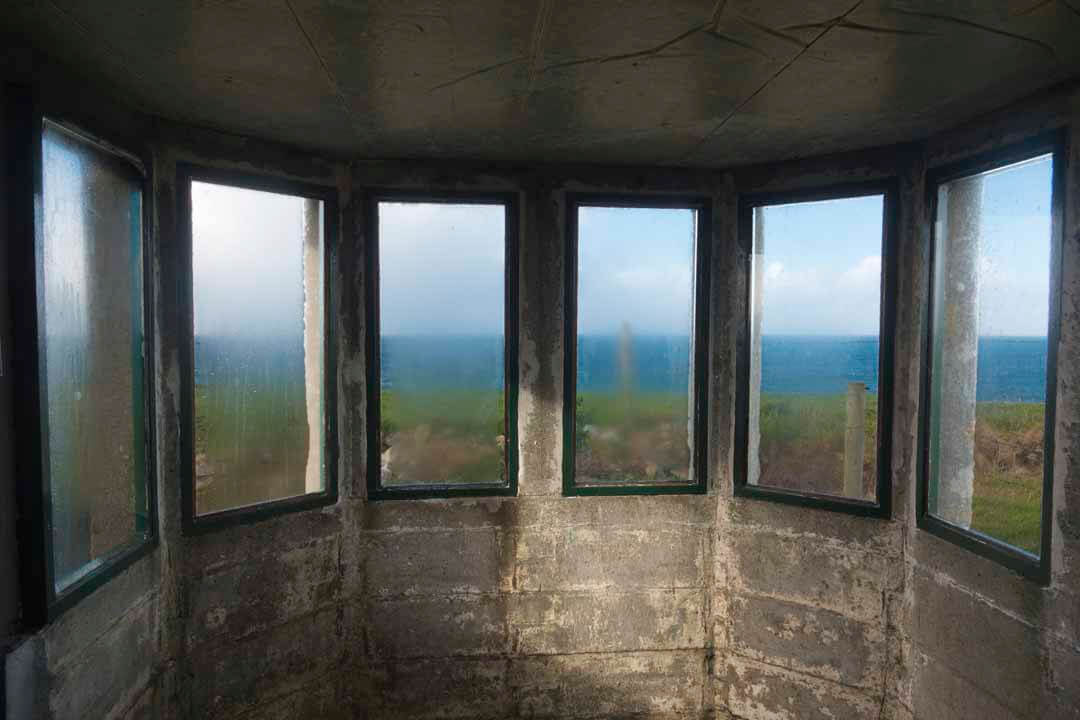
By 1940 LOPs were to have a telescope, binoculars, drawings of various aircraft and ships, a logbook, signal flares, lamps, oilskin jackets and hats for each member and a bicycle.
By 1940 LOPs were to have a telescope, binoculars, drawings of various aircraft and ships, a logbook, signal flares, lamps, oilskin jackets and hats for each member and a bicycle.
By March 1944, over 20,000 aircraft were reported flying near or over Ireland. With the increasing numbers of aircraft there was a growing number of forced landings and crashes caused by crews losing their bearings or aircraft running low on fuel. It was then decided to construct large markers reading “EIRE’ adjacent to LOPs to indicate to aircrews that they were passing over Ireland.
By March 1944, over 20,000 aircraft were reported flying near or over Ireland. With the increasing numbers of aircraft there was a growing number of forced landings and crashes caused by crews losing their bearings or aircraft running low on fuel. It was then decided to construct large markers reading “EIRE’ adjacent to LOPs to indicate to aircrews that they were passing over Ireland.
Aughris was given the number 67 which was etched in a lime filled trench in the field adjacent to the LOP.
Aughris was given the number 67 which was etched in a lime filled trench in the field adjacent to the LOP.

The log books of Aughris indicate the sighting of over a dozen American B17 Flying Fortress bombers and many Catalina Flying Boats on U-boat patrol. Other events recorded included the sighting of a mine which was seen drifting 6 miles west of Aughris in June 1941, and the washing ashore of the body of a German soldier near Templeboy who was buried in the old graveyard there.
The log books of Aughris indicate the sighting of over a dozen American B17 Flying Fortress bombers and many Catalina Flying Boats on U-boat patrol. Other events recorded included the sighting of a mine which was seen drifting 6 miles west of Aughris in June 1941, and the washing ashore of the body of a German soldier near Templeboy who was buried in the old graveyard there.
Another example of how the war had a tangible impact on the community came about in 1940, following the sinking by German U-Boat of the Blue Star Line’s Arandora Star, sailing from Liverpool to St. John’s Newfoundland on 2 July of that year. Over 800 people lost their lives as it sailed off the coast of Bloody Foreland, Co. Donegal. Throughout the month that followed, over 200 bodies were washed up onto the west coast, including that of an unidentified Italian man, who was subsequently buried in nearby Easkey graveyard.
Another example of how the war had a tangible impact on the community came about in 1940, following the sinking by German U-Boat of the Blue Star Line’s Arandora Star, sailing from Liverpool to St. John’s Newfoundland on 2 July of that year. Over 800 people lost their lives as it sailed off the coast of Bloody Foreland, Co. Donegal. Throughout the month that followed, over 200 bodies were washed up onto the west coast, including that of an unidentified Italian man, who was subsequently buried in nearby Easkey graveyard.
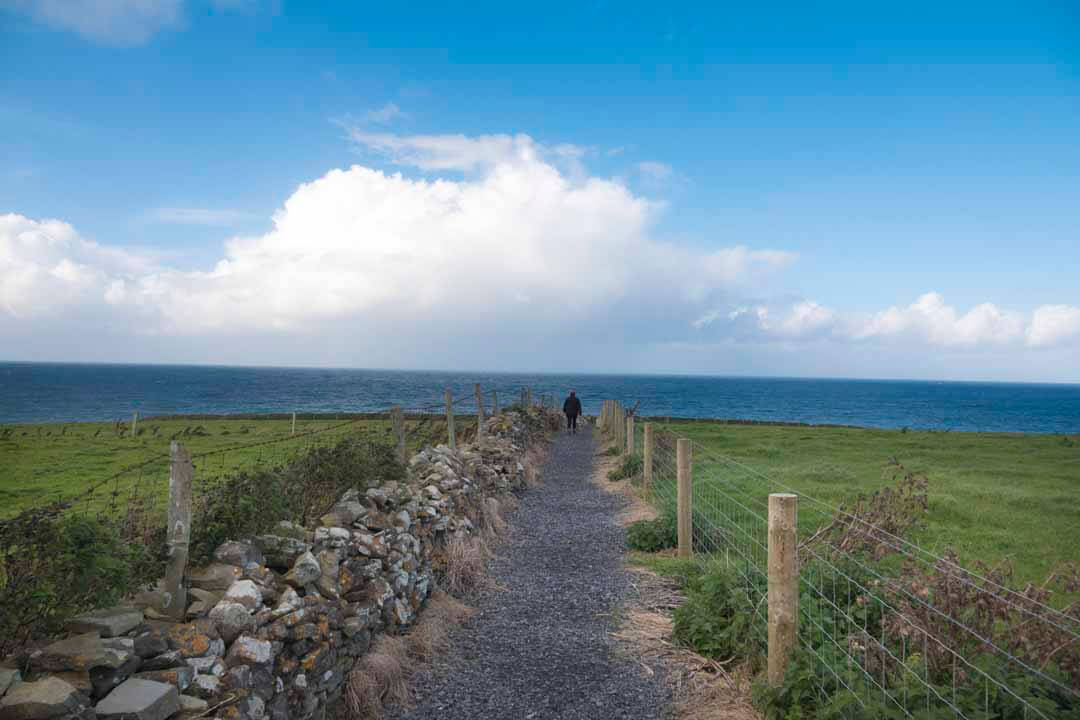
Aughris Promontory Fort is known locally as O’Toole’s Castle and it stands proudly overlooking the bay of Pollaree (the bay of the king). Legend tells us there was a fierce Viking battle here in the 9th century when the island of Innismurray was raided by the Vikings. The story goes that from Innismurray the Vikings spotted the monastery on Aughris Headland and travelled across the bay to plunder its riches. According to legend, treasure was buried under the mound. But in order to retrieve it a life had to be lost so no one ever searched for it – follow the example of the Viking raiders!
Aughris Promontory Fort is known locally as O’Toole’s Castle and it stands proudly overlooking the bay of Pollaree (the bay of the king). Legend tells us there was a fierce Viking battle here in the 9th century when the island of Innismurray was raided by the Vikings. The story goes that from Innismurray the Vikings spotted the monastery on Aughris Headland and travelled across the bay to plunder its riches. According to legend, treasure was buried under the mound. But in order to retrieve it a life had to be lost so no one ever searched for it – follow the example of the Viking raiders!
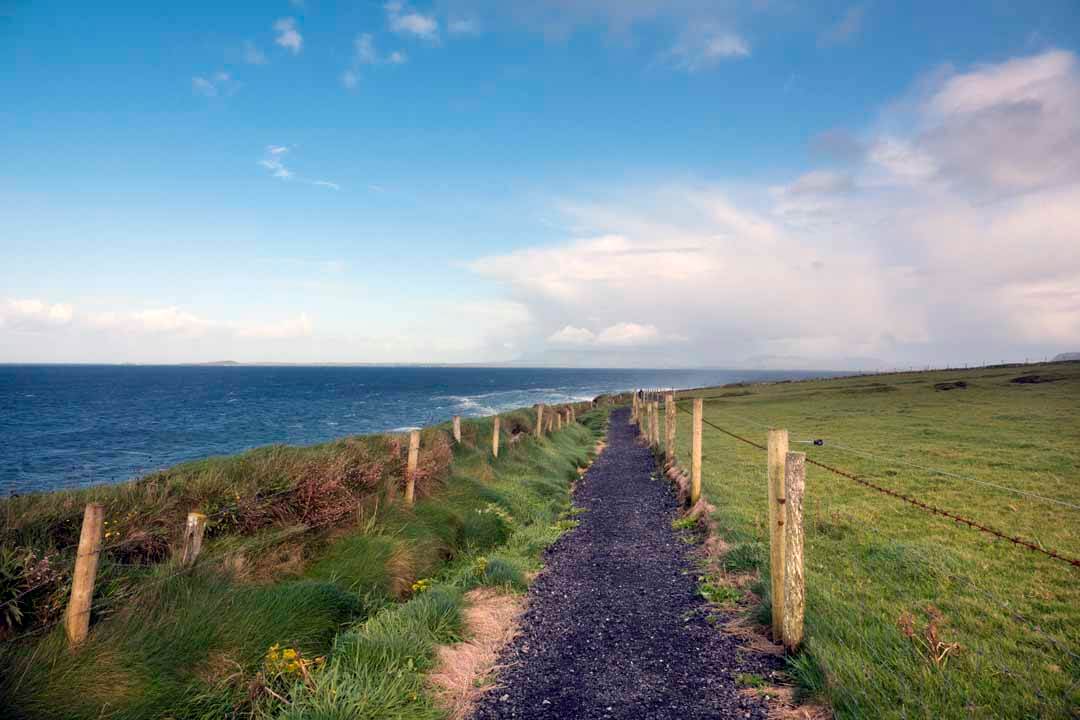
Promontory forts date from the Iron Age and are mostly found in Ireland, as well as in Cornwall, Orkney Islands, Isle of Man and Brittany. A promontory fort is a fortified coastal headland, the seaward sides are naturally defended by a cliff, while ramparts of earth or stone protect the landward side. The main purpose in using a headland for fortification was to take advantage of the natural defence provided by a vertical cliff face. Over 350 promontory forts have been identified along the coastline of Ireland.
Promontory forts date from the Iron Age and are mostly found in Ireland, as well as in Cornwall, Orkney Islands, Isle of Man and Brittany. A promontory fort is a fortified coastal headland, the seaward sides are naturally defended by a cliff, while ramparts of earth or stone protect the landward side. The main purpose in using a headland for fortification was to take advantage of the natural defence provided by a vertical cliff face. Over 350 promontory forts have been identified along the coastline of Ireland.
These structures have also been identified as trading bases, ceremonial enclosures, observation posts and livestock pounds.
These structures have also been identified as trading bases, ceremonial enclosures, observation posts and livestock pounds.
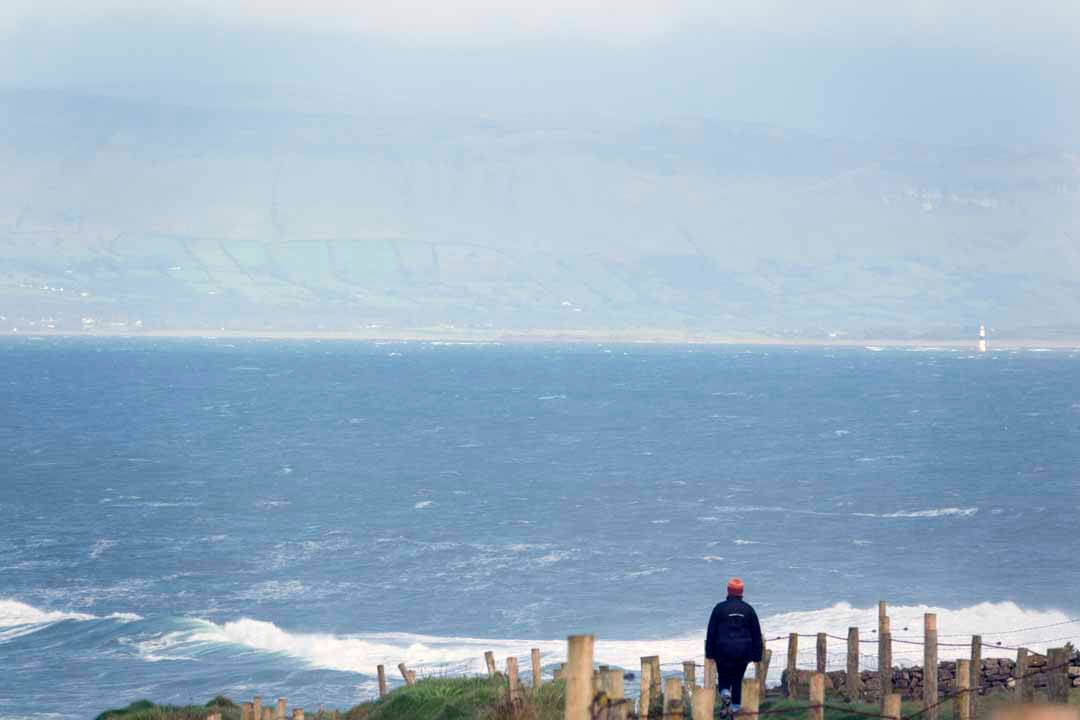
Above all, promontory forts were built for protection. During the Iron Age, more people had weapons such as swords and spears and therefore communities needed to defend themselves from attack. Today all that remains of Aughris Promontory Fort is the mound, a reminder of the exposed nature of the site and of the harsh conditions in which people survived here from the Iron Age through to medieval times.
Above all, promontory forts were built for protection. During the Iron Age, more people had weapons such as swords and spears and therefore communities needed to defend themselves from attack. Today all that remains of Aughris Promontory Fort is the mound, a reminder of the exposed nature of the site and of the harsh conditions in which people survived here from the Iron Age through to medieval times.
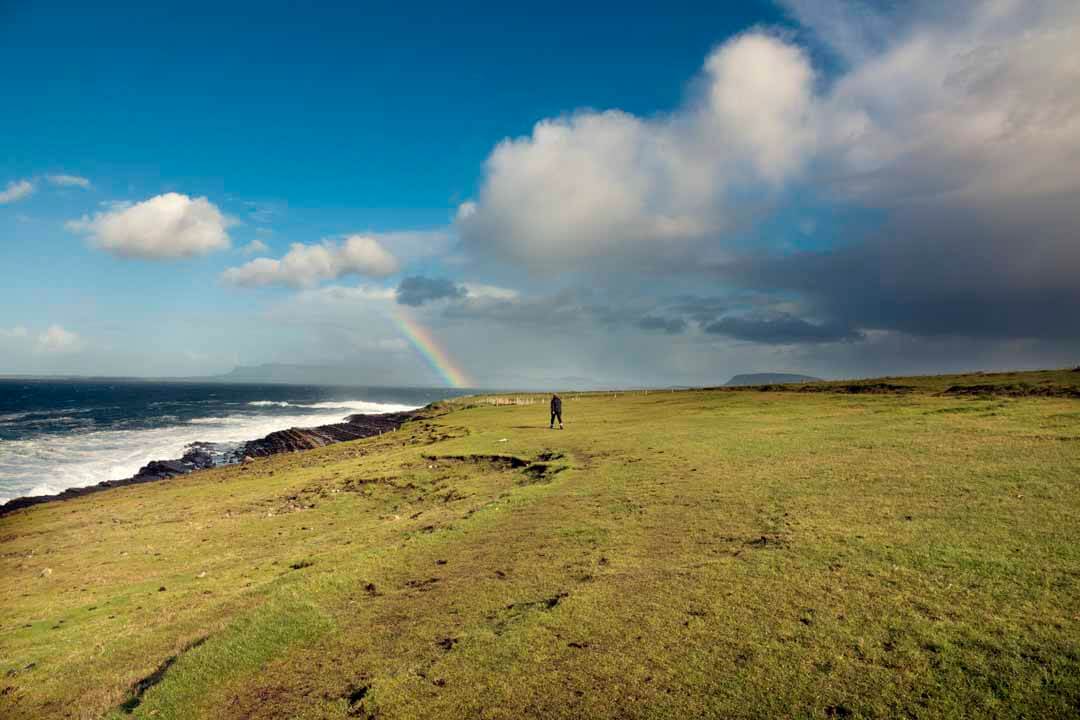
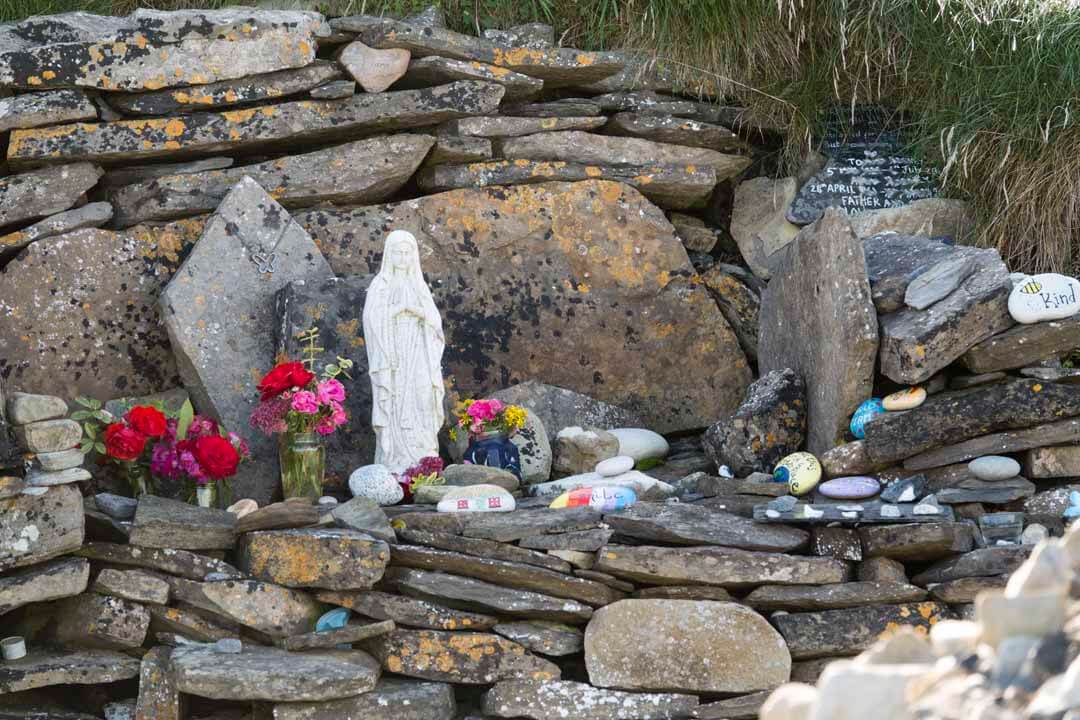

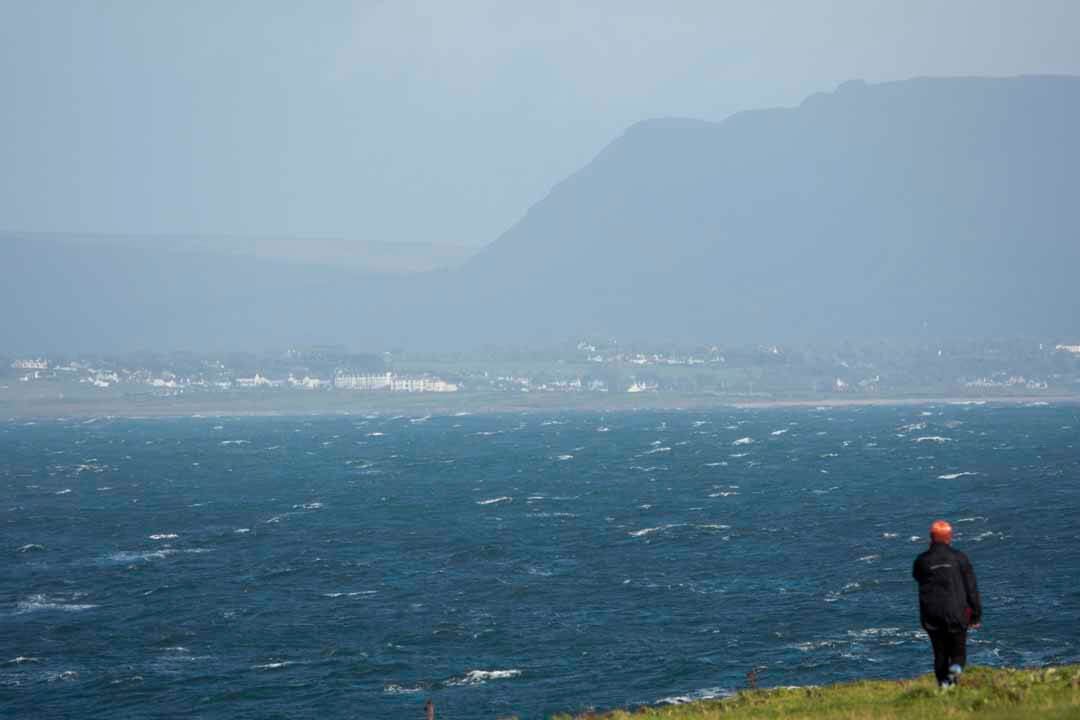

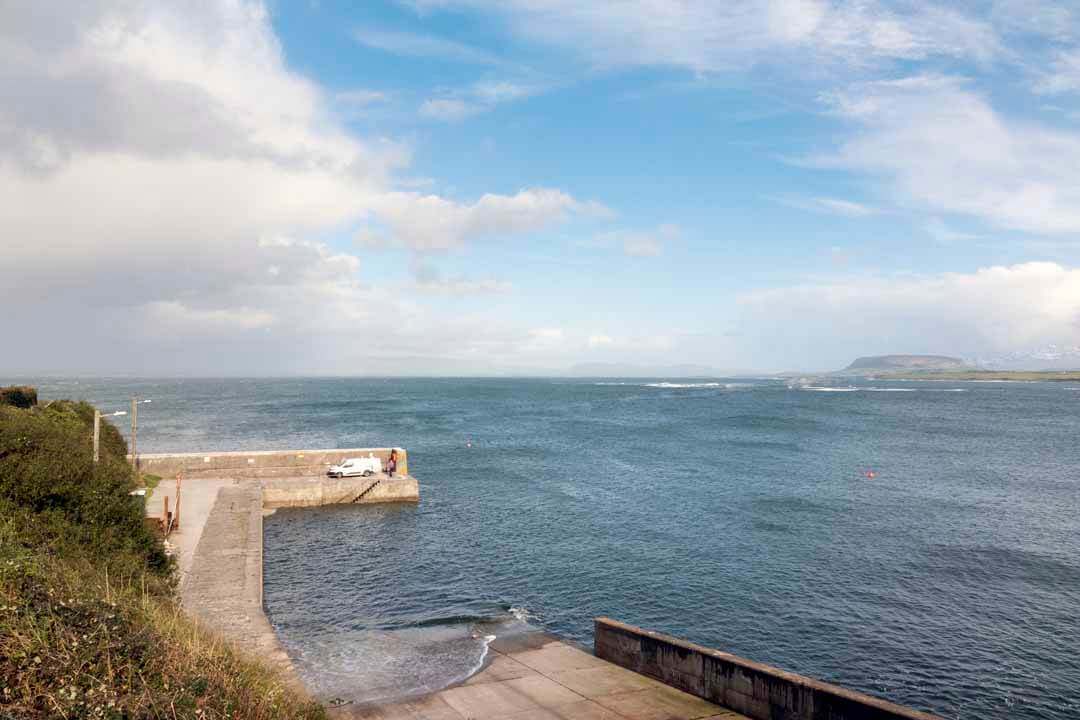
The History of Aughris Pier
The History of Aughris Pier
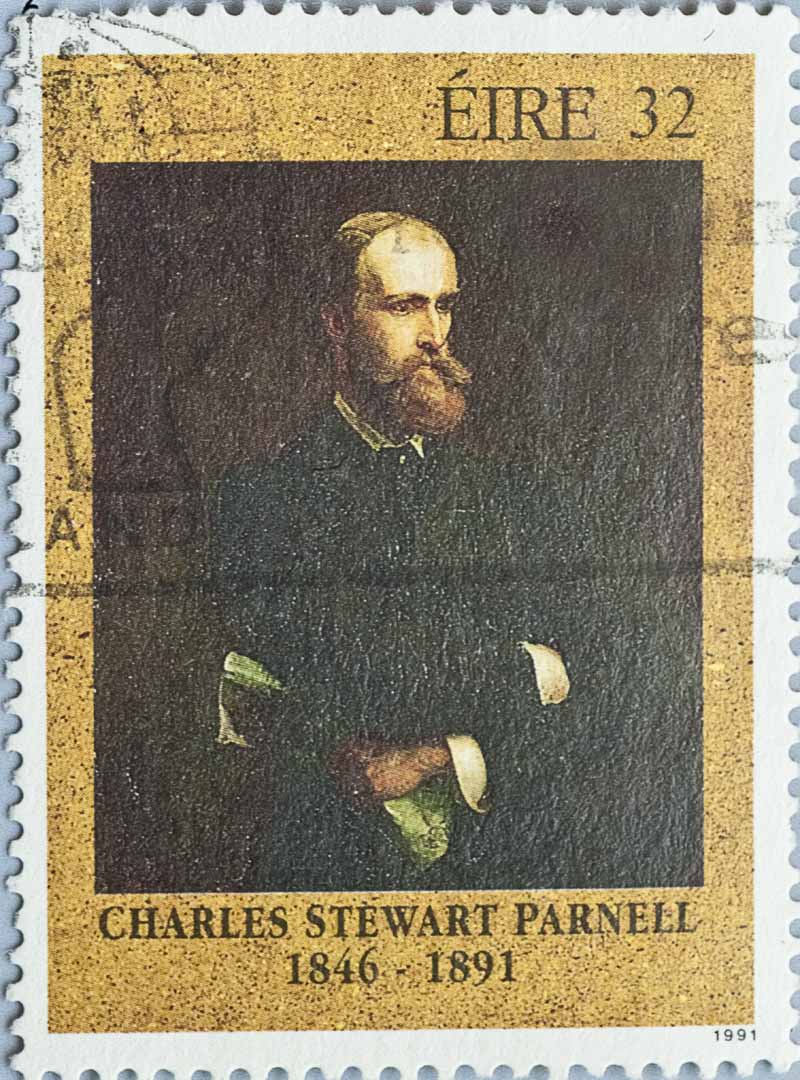
The harbour and pier at Aughris are home to the local fishing community and are used by leisure enthusiasts, water safety groups and families. Aughris Pier was constructed in the late 19th century to enable the local community to supplement their mainly farming income by fishing, and up to 20 boats fished from here at the turn of the century. During the War of Independence, guns were brought ashore here to aid the Republican cause. In the fields adjacent to the pier, political meetings took place at the turn of the 20th century. Charles Stewart Parnell addressed one such meeting in 1890, and an Irish Language Movement Rally in 1901 was addressed by Douglas Hyde and JP Henry and was reputedly attended by up to 8,000 people.
The harbour and pier at Aughris are home to the local fishing community and are used by leisure enthusiasts, water safety groups and families. Aughris Pier was constructed in the late 19th century to enable the local community to supplement their mainly farming income by fishing, and up to 20 boats fished from here at the turn of the century. During the War of Independence, guns were brought ashore here to aid the Republican cause. In the fields adjacent to the pier, political meetings took place at the turn of the 20th century. Charles Stewart Parnell addressed one such meeting in 1890, and an Irish Language Movement Rally in 1901 was addressed by Douglas Hyde and JP Henry and was reputedly attended by up to 8,000 people.
The Deserted Village
The Deserted Village
Aughris Village is understood to have been established here in the early part of the 19th century. It had its humble beginnings as a clochán – the name given to a cluster of single storey dwellings occupied by farmers and fishermen. Farms would consist of a few acres with some comprising just one or two acres. From 1841 to 1851 the population decreased from 269 to 207 due to the Famine and emigration. By 1861 the population had increased to 812 but had decreased again to 400 by 1871 due to mass emigration.
Aughris Village is understood to have been established here in the early part of the 19th century. It had its humble beginnings as a clochán – the name given to a cluster of single storey dwellings occupied by farmers and fishermen. Farms would consist of a few acres with some comprising just one or two acres. From 1841 to 1851 the population decreased from 269 to 207 due to the Famine and emigration. By 1861 the population had increased to 812 but had decreased again to 400 by 1871 due to mass emigration.
In 1901 the residents included 3 blacksmiths, 2 dressmakers, 2 publicans, 3 teachers, 2 tailors, 2 shopkeepers, a carpenter, a bootmaker, a washerwoman and a plasterer. The remains of some of the houses are still visible. Aughris townland was part of the Markree Estate in Collooney until the early 20th century when ownership was given over to the tenants.
In 1901 the residents included 3 blacksmiths, 2 dressmakers, 2 publicans, 3 teachers, 2 tailors, 2 shopkeepers, a carpenter, a bootmaker, a washerwoman and a plasterer. The remains of some of the houses are still visible. Aughris townland was part of the Markree Estate in Collooney until the early 20th century when ownership was given over to the tenants.
The demise of the fishing industry devastated the local economy and as a result mass emigration ensued. Shipping records show that as many as 16 young people departed from the village for America on a single day. One person would remain to care for parents and so began the demise of the village. By the end of the 19th century, just 108 people were recorded as living here. The last resident of the village was Sissy Martin, originally from the US, who died in 1993.
The demise of the fishing industry devastated the local economy and as a result mass emigration ensued. Shipping records show that as many as 16 young people departed from the village for America on a single day. One person would remain to care for parents and so began the demise of the village. By the end of the 19th century, just 108 people were recorded as living here. The last resident of the village was Sissy Martin, originally from the US, who died in 1993.
After a visit to Aughris in 1973 a reporter for the Evening Press published an article titled ‘The Town That Died.’ Today however, one of the houses has been restored and the hope is that life will continue to return to this area in the future.
After a visit to Aughris in 1973 a reporter for the Evening Press published an article titled ‘The Town That Died.’ Today however, one of the houses has been restored and the hope is that life will continue to return to this area in the future.

Waterford Greenway
Waterford Greenway
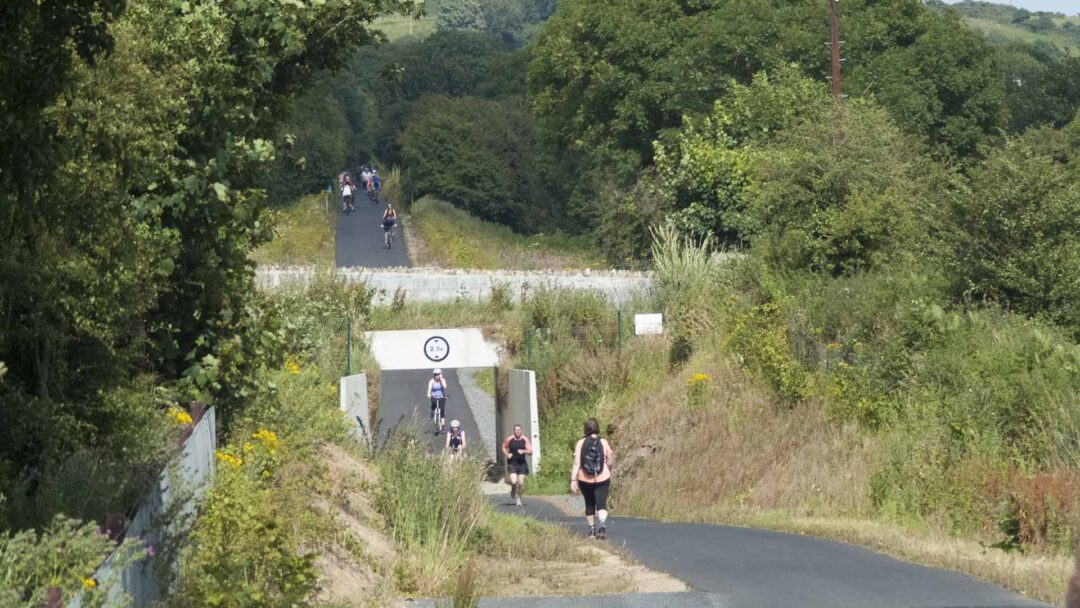

The Great Eastern Greenway
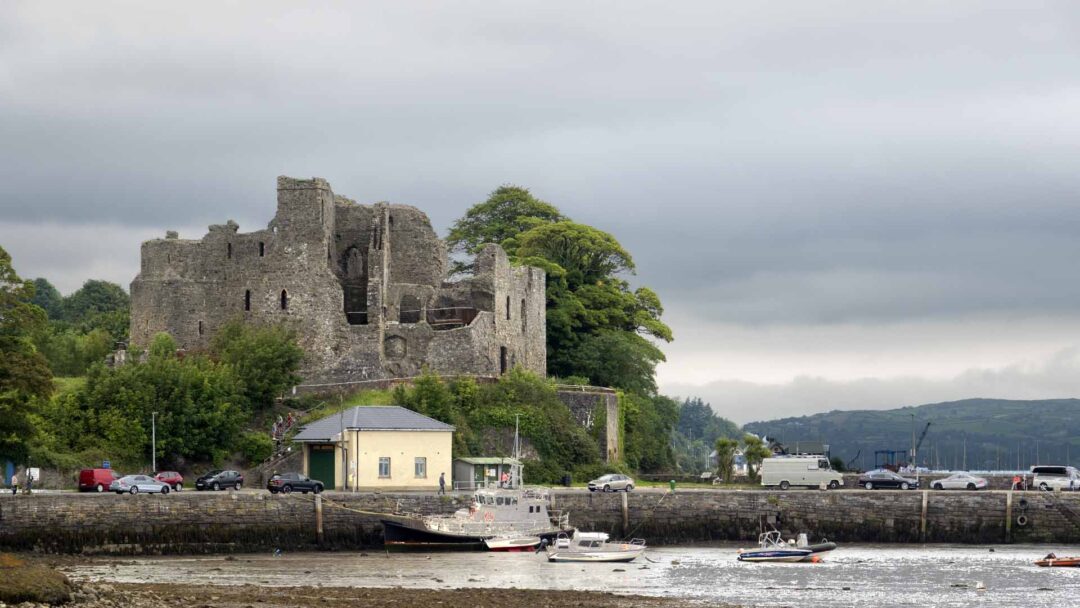

Tralee to Fenit Greenway


The Limerick Greenway
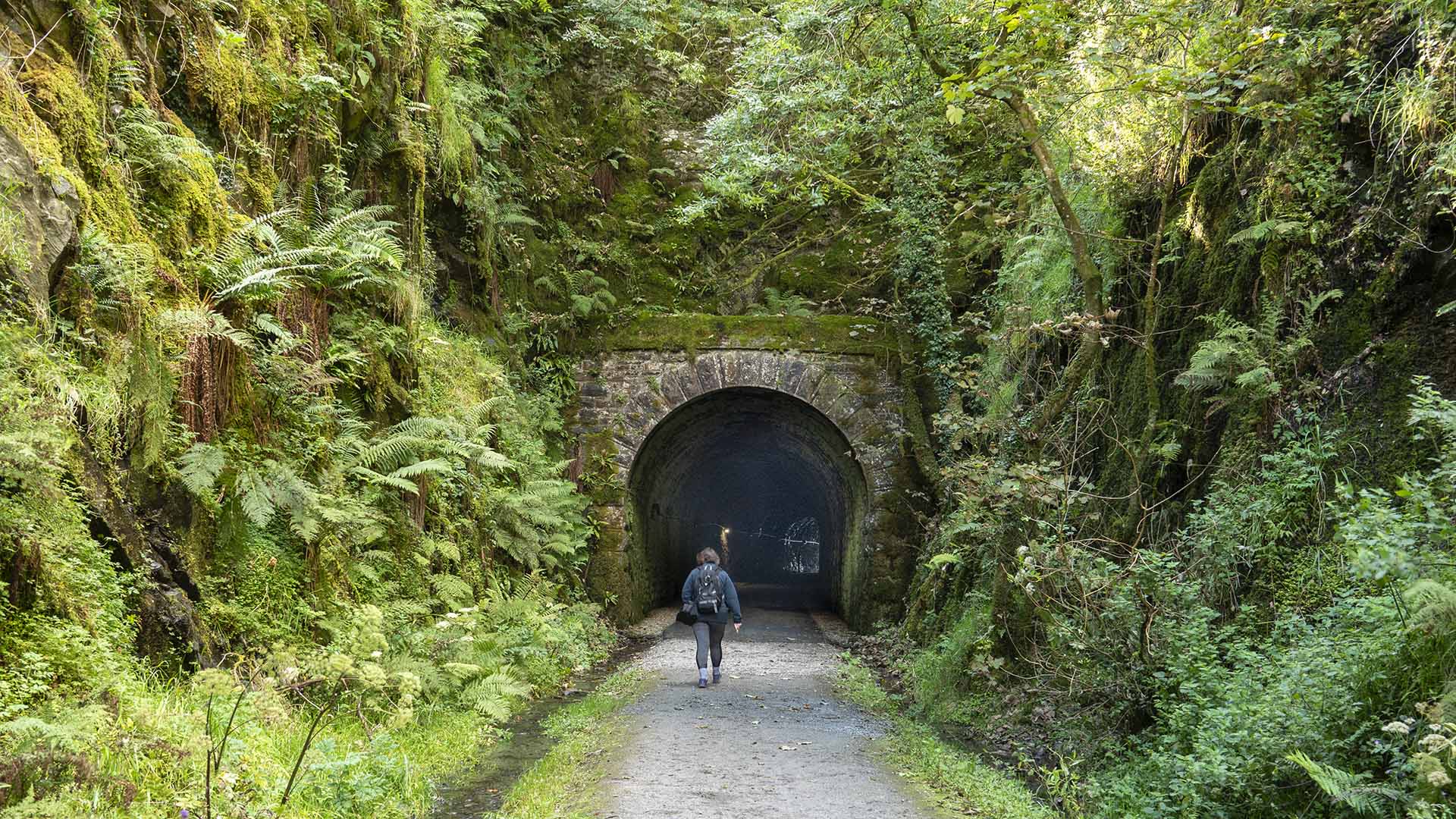

The Royal Canal Greenway
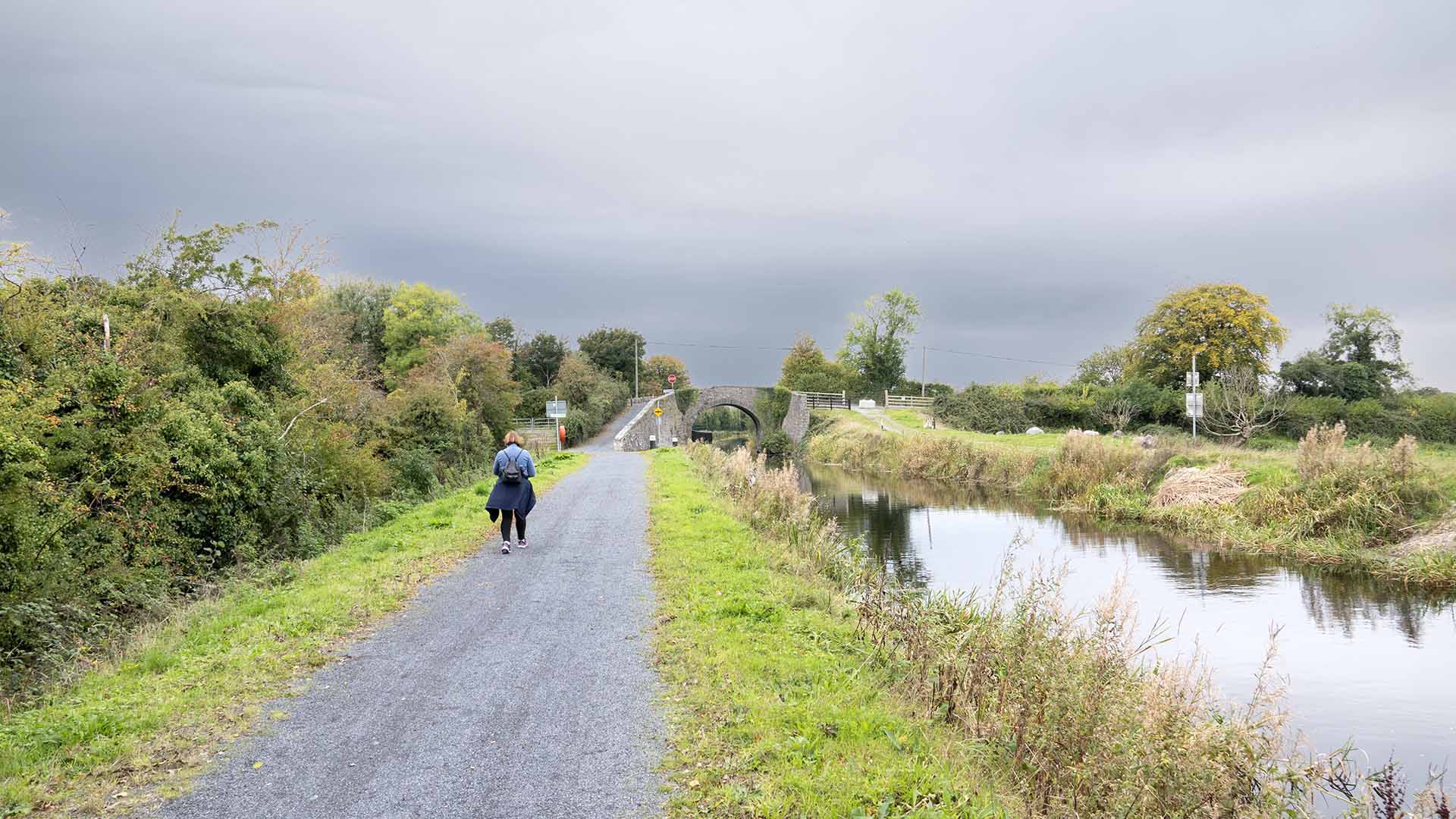

The Cork Harbour Greenway

